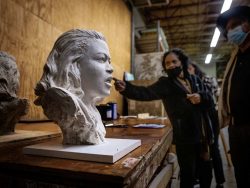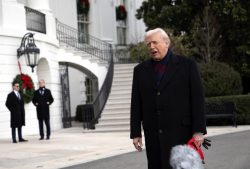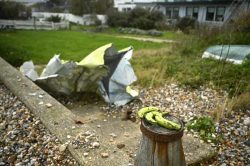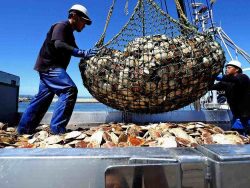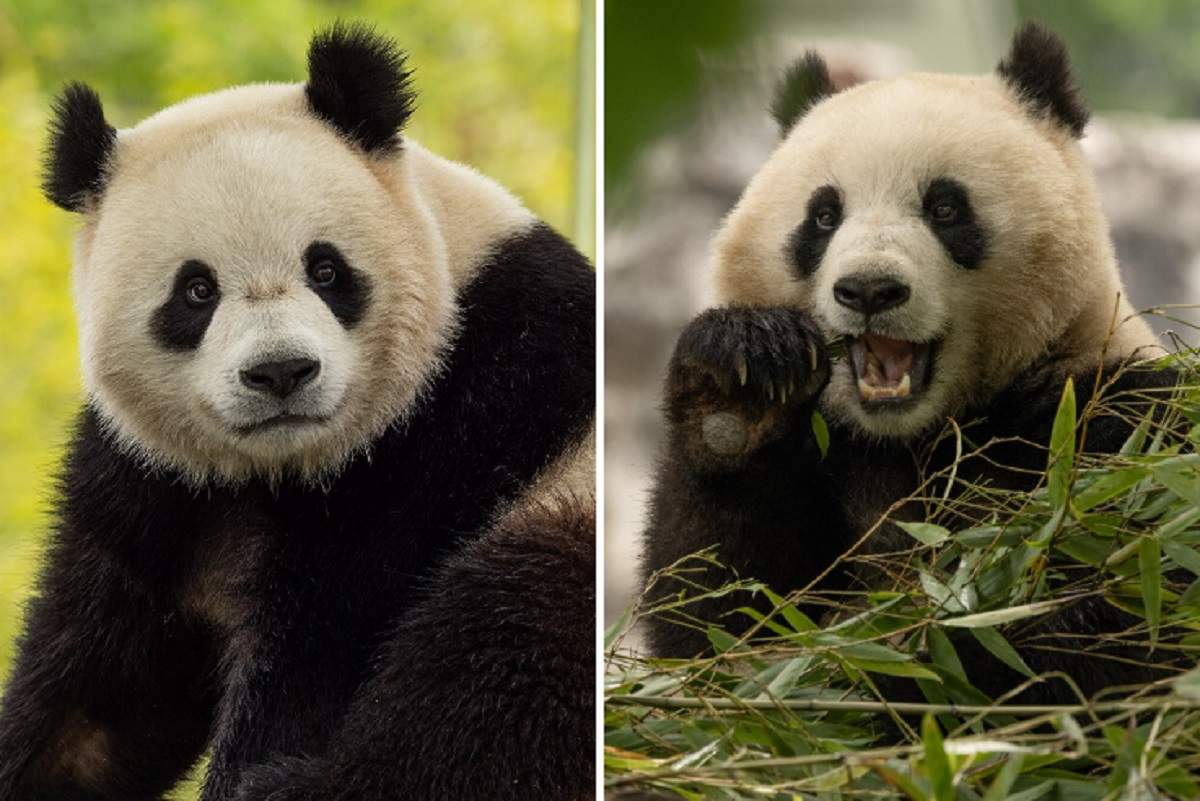
Bao Li (left) and Qing Bao.
13:34 JST, October 16, 2024
After an 8,000-mile journey from China, Washington’s two new giant pandas arrived at the Smithsonian’s National Zoo on Tuesday, delighting panda fans and continuing a conservation program that goes back more than half a century.
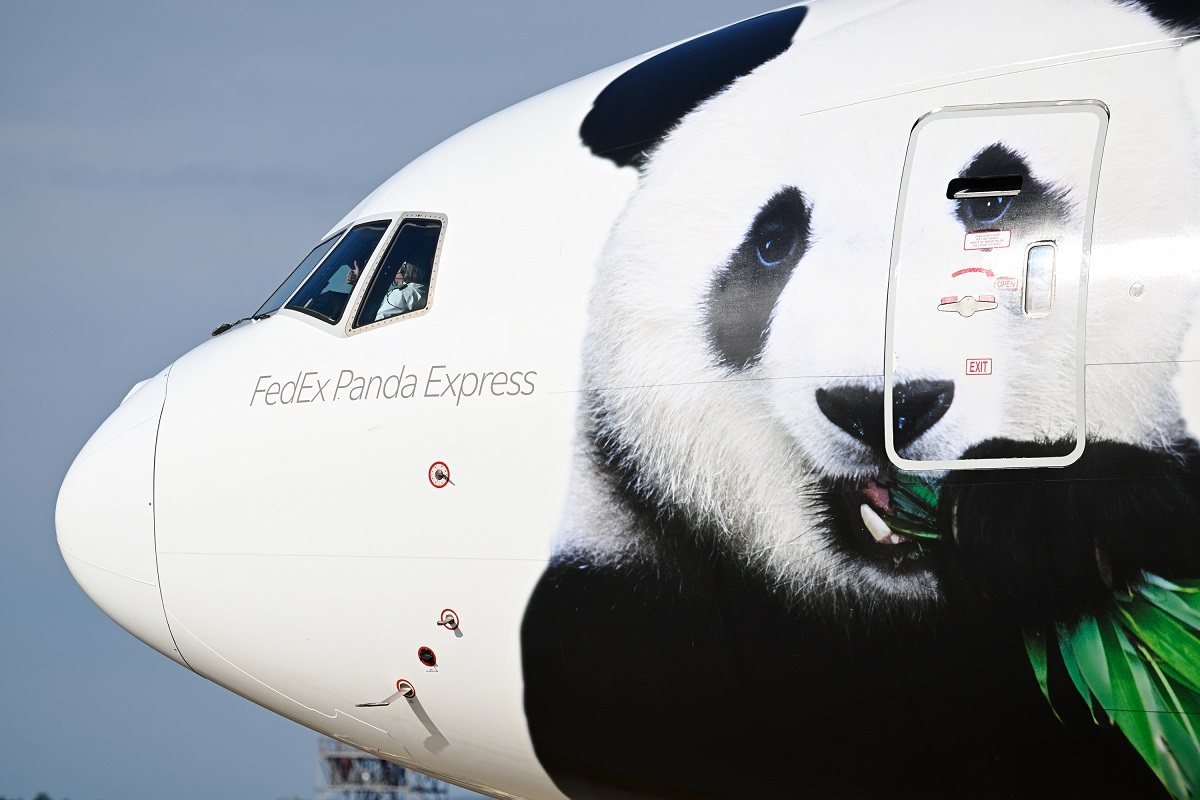
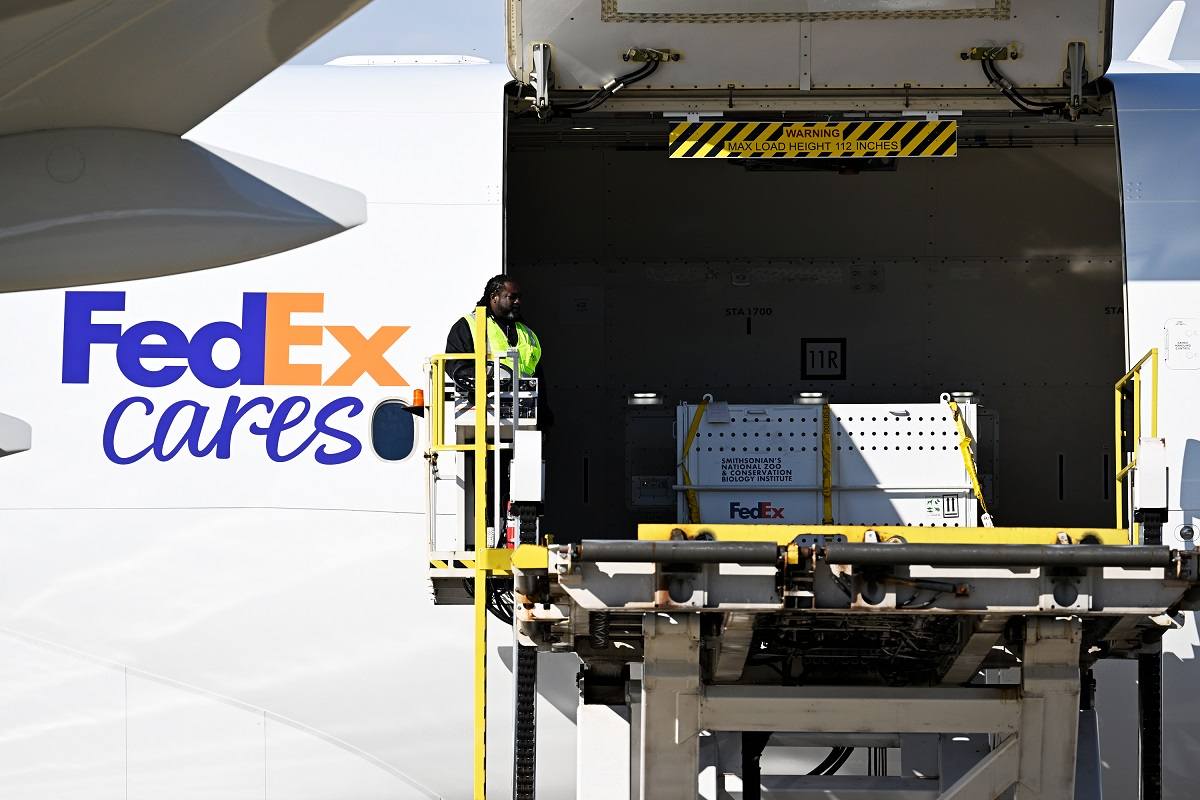
Top: The FedEx “Panda Express.”
Bottom: The pandas are unloaded at Dulles International Airport.
Almost a year after D.C.’s last giant pandas left for China, Qing Bao, a 3-year-old female, and Bao Li, a 3-year-old male, arrived at the zoo on Connecticut Avenue with a police escort around 11:30 a.m.
After traveling 19 hours on a trip from Chengdu, China, with a stop in Anchorage, they had landed at Washington Dulles International Airport about 90 minutes earlier.
Although the zoo said the pandas won’t make their public debut until Jan. 24, pandamania was already underway.
Kirsten Svane, who cheered as she watched a live stream of the arrival, said she is “overjoyed” at the return of the pandas.
“I’m just so happy that they’re back,” said Svane, who runs @dc_pandagirl, an Instagram account with more than 29,000 followers that is dedicated to the zoo’s giant pandas. She was a regular visitor of the panda trio that left the zoo in November.
“I came every weekend, watched them, took pictures and videos, and built up a following on Instagram,” said Svane, who was outside the zoo Tuesday.
“There’s a whole community of people who go regularly,” she added. “We all know each other and see each other regularly. These animals bring people together. They bring so much joy to people, and it’s amazing that they’re back. It’s really great for the city.”
Susan Barba of San Leandro, Calif., said in an email: “I am so excited. … My sister and I as well as two of our friends are planning a trip to D.C. in February to see them.
“Our love of the pandas go back to when we saw [earlier giant pandas] Ling-Ling and Hsing-Hsing as children,” she added. “And I must say even though it was 45 years ago when we first saw them, the excitement and joy has never changed.”
Lonnie G. Bunch III, the Smithsonian’s secretary, said: “I am really pleased that the Smithsonian is able to do something that makes Washington smile.”
“I didn’t want to be the Smithsonian secretary that lost the pandas so I was really committed to making sure we’d get them back,” he said in a phone interview Tuesday.
“They’ve become part of the iconography of the city,” he said. “The pandas are part of what makes you a Washingtonian. To see them really is a symbol of what this city is, a home.”
The new pandas will be quarantined in the panda house for a minimum of 30 days to reduce the risk of introducing parasites or disease to other animals. Then they’ll have more quiet time to get used to their new habitat.
“During quarantine, they’re going to get to know their keepers. And they’re going to get settled into their routine,” zoo spokeswoman Jennifer Zoon said in a recent interview.
“A lot of the work that our giant panda team does with them is training – training different behaviors for … everyday care and medical training,” she said. “That’s all going to be part of the acclimation process, and building that relationship with their keepers.”
By previous agreement, the zoo’s most recent giant panda residents – Mei Xiang, a 26-year-old female; Tian Tian, a 27-year-old male; and Xiao Qi Ji, their 4-year-old male offspring – left for China on Nov. 8.
“It’s been a long year without pandas,” veteran giant panda keeper Laurie Thompson, who traveled to China to help with the handover of the new bears, said recently.
“We’re excited,” she said in an interview before she traveled. “We’re ready to meet them and see how they are, compared to our last guys. It was sad to see them go, and it’s not the same without them. But we’ll be excited to see the new guys, and we’ll fall in love with them.”
The animals arrived on a white-and-blue FedEx Boeing 777 “Panda Express” cargo jet adorned with an image of a giant panda on its nose.
Zoo director Brandie Smith also flew to China this month – along with Thompson, keepers Mariel Lally and Trish Jarvis, and zoo veterinarian James Steeil – to attend the handover and get acquainted with the bears.
The idea was to talk to Chinese keepers, let the pandas start to hear the voices of the Americans and begin to trust their new keepers.
“It takes time,” Thompson said.
New panda Bao Li has family roots in D.C.
He is the son of Bao Bao, a female giant panda who was born at the zoo in 2013, and the grandson of Mei Xiang and Tian Tian, the zoo’s most recent panda couple.
The new arrivals signal a renewal of the National Zoo’s 50-year-long project to conserve, study and exhibit giant pandas. They come after concern in the past few years that the program might be in jeopardy, in part because of poor relations between the United States and China.
The bears’ arrival also came as the New York Times published an investigation into the treatment of the giant panda in zoos around the world.
The article cites experts who say the animals are mistreated and exploited for institutional prestige and financial gain. It says the stated effort to return giant pandas to the wild has been a failure.
The report pointed to institutions in China and Japan, but also the National Zoo for what it said were repeated artificial insemination procedures that some perceived as harsh and potentially dangerous.
“I can’t tell you how the process is unfolding at other places or in China proper,” Bunch said of the report. “I just know that for [the National Zoo] it is really important to make sure that we are never a place that harms an animal, but a place that ensures the future of the animal.”
He said there’s no doubt excitement about pandas leads to sales of panda merchandise, but “never was our goal to make money.”
“Our goal was to preserve and conserve the pandas and to give Washingtonians something that they could care about and be happy about,” Bunch said.
Over the years, the zoo has added four giant panda cubs to the global population and has taken care of four adult animals.
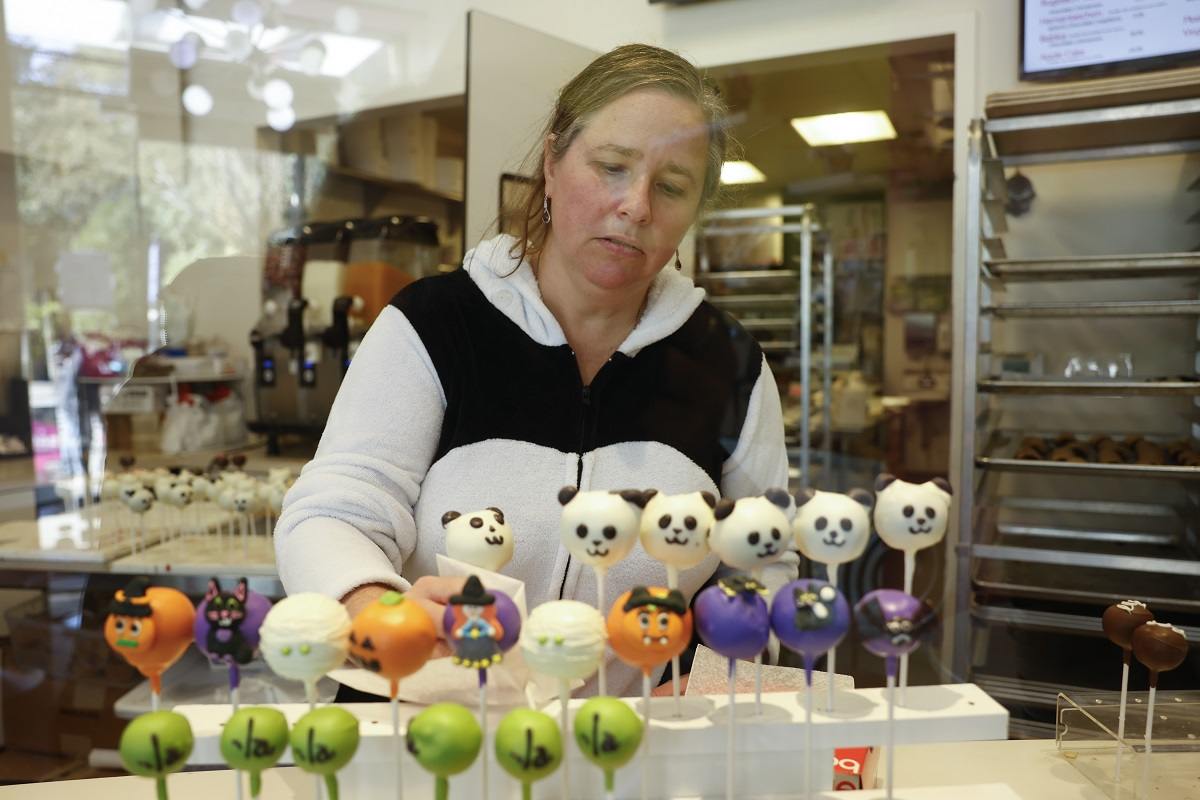
Yael Krigman, owner of Baked by Yael, across from the zoo, made cake pops for the arrival of the pandas.
In 2016, the International Union for Conservation of Nature announced that the giant panda’s status had improved to “vulnerable” from “endangered” on the list of species at risk of extinction.
As few as 1,864 giant pandas live in the wild, the zoo says on its website. Another 600 live in zoos and breeding centers around the world.
China owns and leases all giant pandas in U.S. zoos, and has agreements that require the animals and their cubs to go to China after their tenure is up. The new pandas are coming on a 10-year lease, ending in April 2034, during which the zoo will pay $1 million a year to the China Wildlife Conservation Association, the zoo has said.
The zoo’s giant panda program began in 1972 with a dramatic Cold War meeting between President Richard M. Nixon and Chinese Communist Party Chairman Mao Zedong.
During the visit, first lady Pat Nixon was sitting beside Chinese Premier Zhou Enlai at a banquet in Beijing when Zhou offered the United States a gift of two giant pandas.
Those two – Ling-Ling, a female, and Hsing-Hsing, a male – arrived that year. They lived at the zoo for 20 years, launching the pandamania that has continued ever since.
Lynne Moriarty lives just a few blocks from the zoo and came out to try to catch the pandas’ arrival. It’s a place she had visited often.
“My kids and I spent a lot of time coming to the zoo,” she said. “It’s such a wonderful park. To be able to go in and‚ you know, stroll through at the end of a work day, and the door’s still open. We have wonderful memories of the zoo.”
"News Services" POPULAR ARTICLE
-

American Playwright Jeremy O. Harris Arrested in Japan on Alleged Drug Smuggling
-

Japan’s Nikkei Stock Average as JGB Yields, Yen Rise on Rate-Hike Bets
-

Japan’s Nikkei Stock Average Licks Wounds after Selloff Sparked by BOJ Hike Bets (UPDATE 1)
-

Japanese Bond Yields Zoom, Stocks Slide as Rate Hike Looms
-

Japan’s Nikkei Stock Average Buoyed by Stable Yen; SoftBank’s Slide Caps Gains (UPDATE 1)
JN ACCESS RANKING
-

Keidanren Chairman Yoshinobu Tsutsui Visits Kashiwazaki-Kariwa Nuclear Power Plant; Inspects New Emergency Safety System
-

Imports of Rare Earths from China Facing Delays, May Be Caused by Deterioration of Japan-China Relations
-

University of Tokyo Professor Discusses Japanese Economic Security in Interview Ahead of Forum
-

Japan Pulls out of Vietnam Nuclear Project, Complicating Hanoi’s Power Plans
-

Govt Aims to Expand NISA Program Lineup, Abolish Age Restriction




